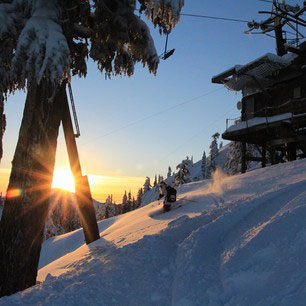Outdoor Emergency Care
Outdoor Emergency Care (OEC) and Cardio Pulmonary Resuscitation (CPR) are taught to all candidates between September and December. The course is taught by doctors, medical specialists and OEC instructors every year, or as candidates are identified and additional patrollers are required.
The 6th edition of the Outdoor Emergency Care manual is what the National Ski Patrol uses to guide it's curriculum. This 1200+ page tome has recently been released and is now available in either PDF and book formats from the publisher.
The course is a 3 month intensive study on:
- Rescue basics
- Emergency care systems
- Incident command and triage
- Moving and transporting patients
- Anatomy and physiology, patient assessment
- Medical communication and documentation
- Airway management, shock, altered mental status
- Substance abuce and poisoning
- Respiratory emergencies
- Allergies and anaphylaxis
- Cardiovascular emergencies
- Gastrointestinal and genitourinary emergencies
- Principles of trauma, soft-tissue injuries
- Burns, musculoskeletal injuries
- Head and spine injuries
- Face, eye and neck injuries
- Thoracic trauma
- Abdominal and pelvic trauma
- Cold-related emergencies
- Heat-related emergencies
- Plant and animal emergencies
- Altitude-related emergencies
- Water emergencies
- Pediatric emergencies
- Geriatric emergencies
- Outdoor adaptive athletes
- Behavioral emergencies and crisis response
- Obstetric and gynocologic emergencies
This course is similar to what an Emergency Medical Training (EMT) would receive, with an emphasis on outdoor-related injuries.
Yearly refreshers are critical for a patrollers continuing education. The OEC manual is broken down into 3 sections. Approximately 1/3 of the content is reviewed and every patroller is re-certified during a full day of hands-on, practical application.
Additionally, we do mini refreshers during the year to keep our skills fresh. Examples might include Sick/Not Sick that helps you assess whether a patient requires Basic Life Support (BLS) or Advanced Life Support (ALS). Or maybe a quick review and hands on practice with a splint. We might also be required to take a course such as Incident Command (ICS 100) with content from FEMA.
Instructor training is offered every year and is highly recommended for every patroller.
Cardio Pulmonary Resuscitation / Automated External Difibrulators
In 2015 the American Heart Association updated their recommended CPR proceedures to focus on providing chest compressions before airway management.
Keep compression rate of at least 100 minutes for all persons. Keep compression depth of between 2-2.4 inches for adults and children and about 1.5 inches for infants. Allow complete chest recoil after each compression. Minimize interruptions in CPR, except to use an AED or to change rescuer positions.
Summary of High-Quality CPR Components for Basic Life Support Providers.
Chairlift Evacuation / On-The-Hill
On-the-hill (OTH) is a full day that includes an update on area protocols and an opportunity to refresh skills in chairlift evacuation. This includes communication, rope handling and belay techniques.
Toboggan Training
Outdoor Emergency Transportation (OET) is unique to the National Ski Patrol. Learn more.
Avalanche Training
Anyone entering the Alpental back bowls should understand the policy, have the proper equipment, and have avalanche training. Learn more.


